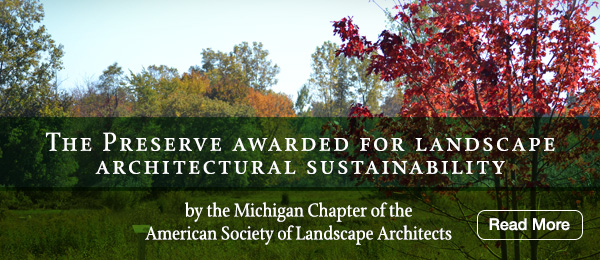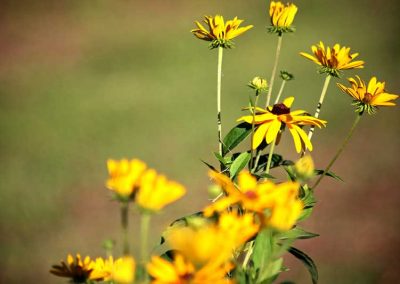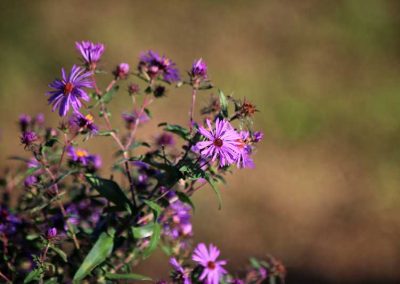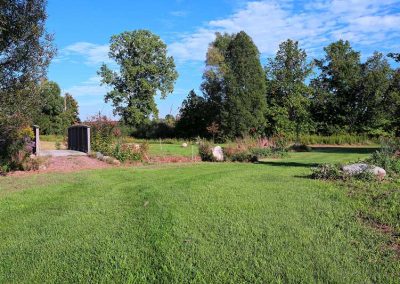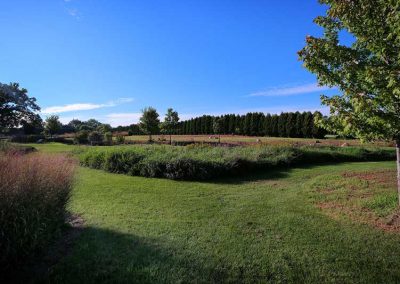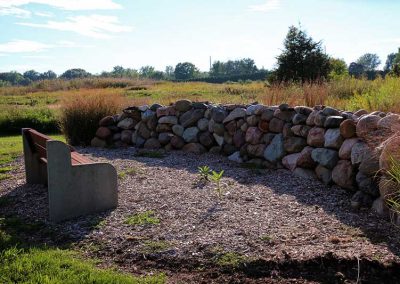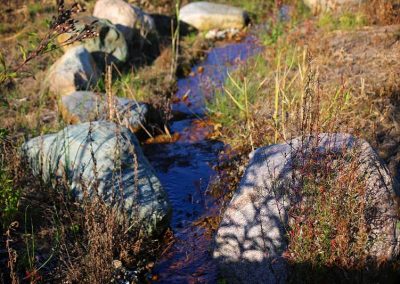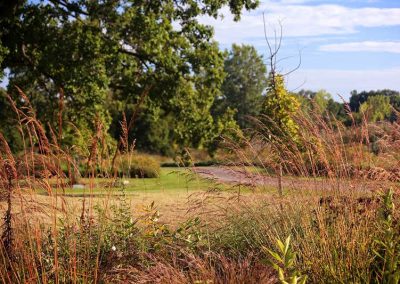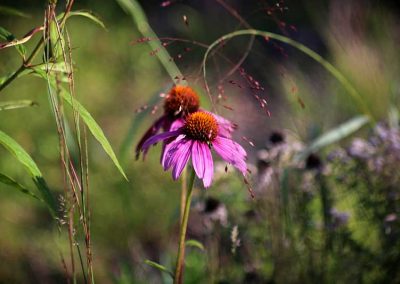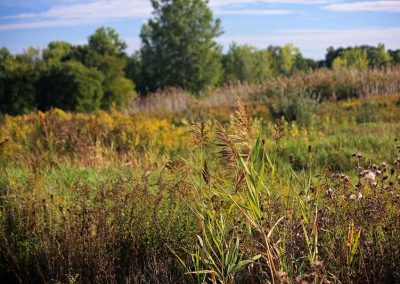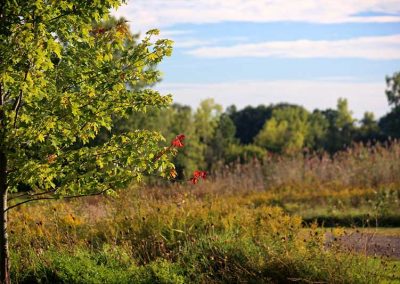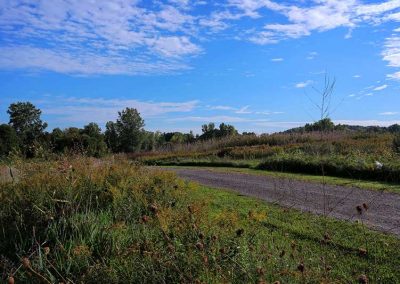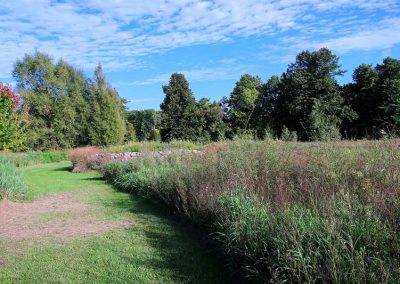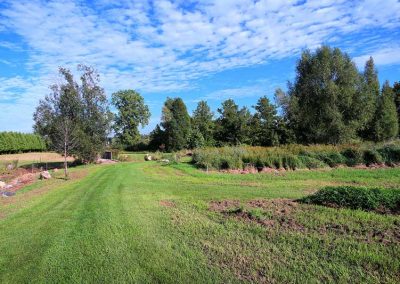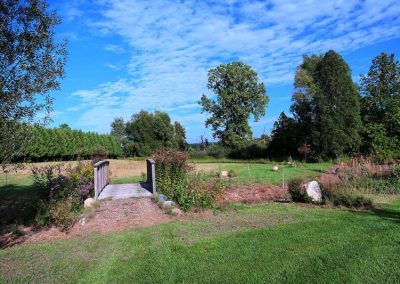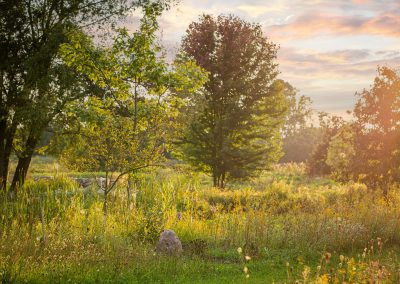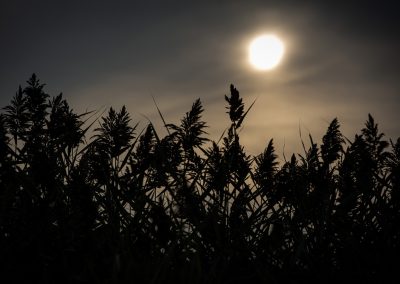REMAINING ‘GREEN’ AFTER DEATH
Green Burials Provide Eco Alternatives
BY MARK VEST- Rochester Post April 7, 2022
METRO DETROIT- When Grosse Pointe Woods resident Brian Mason’s mother-in-law expressed interest in having her funeral arrangements made for a traditional burial, a visit was made to All Saints Cemetery in Waterford.
“It was great, and my wife looked and said, ‘This other area over here, what’s that?’” Mason said.
The response his wife got helped set the wheels in motion for a decision the couple ultimately made.
“ ‘Well, that’s the green burial area with the bird sanctuary,’ (they said). Click.” He described his wife’s reaction to that, “ ’OK, this is what my husband has been musing about forever,’ like, ‘Why can’t you just put me in a gunny sack, put me in the ground, and let me go back to nature and nurture a tree?’ ” Mason said. “That’s how it came to be, and we immediately bought six plots for the whole family.”
Some cemeteries and funeral homes have options for people who wish to protect the environment, even after they die.
The Preserve at All Saints Cemetery in Waterford offers both “green” and traditional burials.
“All Saints Cemetery and The Preserve, it’s two separate cemeteries, but on the same property,” said Director Russ Burns. “All Saints Cemetery is a conventional cemetery, where we bury people in the conventional manner that we’re all kind of used to now- metal caskets, grave liners or vault, quarried headstones with inscriptions and things on them, where The Preserve is actually green burial, where everything goes back to nature. Everything is biodegradable, which, really, is the older of the two methods, because we’ve been burying people green since the beginning of time… Everybody thinks this is a new thing, but actually we’ve just come full circle.”
Michael Lope is the co-owner of Wm. Sullivan & Son Funeral Directors, which has locations in Royal Oak and Utica.
He explained the role the funeral home plays in green burials.
“When we bring somebody into our care, it’s a little different, because we don’t do any traditional embalming fluids or anything like that,” Lope said of the green burial process. “Of course, we still get them dressed and casketed, but from the very beginning, it changes because of the embalming. So it doesn’t allow for your traditional visitation and things like that, but they do have ways of doing that with green embalming fluids or dry ice. So it is an option, but most of what we do with green is we bring somebody into our care, we clean them, bathe them, dress them and casket them.”
Lope said the caskets are made of either sustainable or biodegradable materials.
“There’s no metal in them. There’s no lacquers on the woods; all sustainable materials on the interior and exterior of the casket,” he said. “And the other big step that’s a little bit different is we typically do these burials within, like, three days just because of, obviously, what happens if somebody’s not embalmed; we want to try and get (to) the process a little bit sooner.”
How deep someone is buried in the ground also separates a green burial from a traditional one.
“In a conventional burial, the grave is usually 5 ½ to 6 feet deep, whereas a green burial, depending upon the container that the decedent is placed in, is normally 3 ½ to 4 ½ feet deep, at a shallower level,” Burns said, “You don’t have to worry about animals or anything. They’re not going to sniff you out and disturb the grave at all. It is done at a shallower level because that is where the microbes are primarily at that help break down the remains of the individual in a more efficient and a speedier manner.”
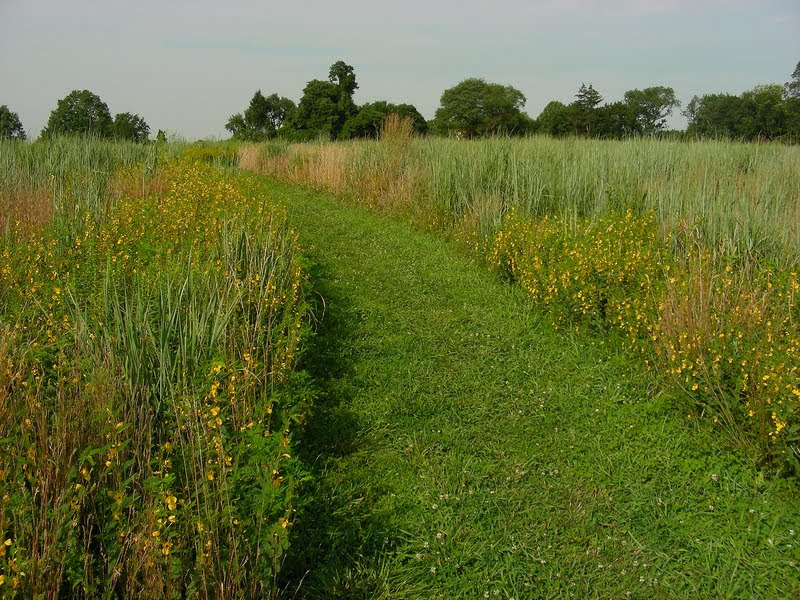
The Preserve at All Saints Cemetery in Waterford opened in 2010. The site offers an alternative to traditional burials for people who aim to help protect the environment.
Lope shed more light on how green burial differs from a more conventional one when it comes to body preservation.
“There are options where we can do embalming with what they call a green embalming fluid, and we can use dry ice if they want to have more of your traditional visitation,” he said. “So the option is there for that, but the majority of the people that we’re serving in green scenarios don’t have any embalming at all. … The Green Burial Council, they don’t want us using the traditional embalming fluids, so without that, there’s really no preservation. It’s more or just a natural passing, and then burial after that.”
The Green Burial Council is a group that formed to set standards for the green burial process.
Burns said The Preserve opened in 2010. He discussed the rise in popularity of green burials since then.
“Every year, it seems like it’s getting more and more momentum as word spreads about it; it’s (gaining) more and more popularity,” Burns said. “We went from just maybe a few burials in the first year that was opened to averaging about maybe 30, 35 burials a year. … The (number of) people that are planning, and buying ahead of time has increased greatly since then.
Approximately seven or eight years ago, Waterford resident Ray Colpaert opted to buy two plots at The Preserve, one for him and one for his wife.
“We love nature, and I thought, ‘This would be a good way to go,’” Colpaert said. “It’s not all headstones; its little field stones here and there. It’s more nature oriented. It’s just a natural process for the ending.”
According to Burns, cremation is the most popular option for the public right now. And although he thinks that will remain the No. 1 choice as a form of burial, he is of the opinion that in 10-20 years, green burials will be “neck-and-neck” with conventional ones.
“The Preserve is a little under 6 acres; we’re probably going to need to open up another section for green burial within the next couple of years because it’s selling out so quick – not so much filling up with burials, but selling out because people are buying ahead of time because they really like this way of taking care of their remains. Reducing their carbon footprint is kind of what we talk about when we promote it,” Burns said.
According to statistics from The Green Burial Council, a traditional burial produces 250 pounds of carbon, as opposed to the 25 pounds produced by a green burial.
For Colpaert, one of the advantages of a green burial is that “it’s all a natural thing.”
“There is no caskets,” he said. “You either get wrapped in a cloth or you get put into a wooden box. … The Preserve is about everything eventually going back to nature.”
Like Burns, Lope also believes that green burials will continue to grow in popularity.
“I think the segment of population where we will see it keep growing is folks that don’t know it exists right now,” he said. “They probably have environmentally friendly tendencies. These are the folks that maybe would be cremated and realize, ‘OK, there is another option that is more environmentally friendly even than cremation.’ ”
Burns said that the gravesites at The Preserve are 4 feet by 10 feet, which is larger than those at conventional cemeteries. He said that “allows for more room on either side when you are doing other burials,” and that “there’s well over a foot between each grave.”
He also discussed other differences between The Preserve and conventional gravesites.
“We don’t do any mowing; we let all the grasses, wildflowers and all the other flora and fauna just grow,” Burns said. “The only thing we do is mow pathways, so people can get to their loved one’s gravesite along the pathways.”
Burns said that nothing artificial, such as pacemakers, are permitted to be buried with people at The Preserve. In order to have sustainability, he said, The Preserve has programs in place to eradicate or control invasive species.
The price for burials at The Preserve can range from approximately $1,900 to $2,700.
Those who visit The Preserve can expect to see a lot of rocks.
“Whenever we dig up a couple of decent-sized rocks,” Burns said, “what we’ll do is we’ll have people go out and select their rock, and then they’ll create a design for it. Then we’ll have that inscribed in the rock, and we place the rock on the grave. … If you go out there and you see the rocks with people’s names inscribed in them along the pathways, it does kind of set the place off; it’s pretty neat.”
The rocks are an aspect of The Preserve that stands out for Mason.
“They hose them off, clean them up, you pick one, and it will be etched with your name, so your headstone becomes a natural field stone that came out of the very field that you’ve just been put into,” he said.
Lope said the service charge for a green burial at Wm. Sullivan & Sons Funeral Directors is $2,150, with burial shrouds and caskets starting under $500.
He said it is “not as expensive as traditional burial.”
For more information, visit sullivanfuneraldirectors.com.
For more information about The Preserve, visit mtelliott.com/the preserve.
“The Preserve is (the) choice for the people that live a green lifestyle,” Burns said. “They choose this because it’s not a conventional cemetery. It’s true green, where the fields, the grasses and everything grows. …It’s a really cool, unique property.”
Reprinted with permission from C&G Newspapers.
© Mt. Elliott Cemetery Association. All rights reserved. Privacy Policy

